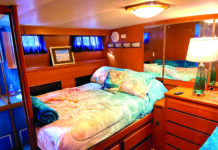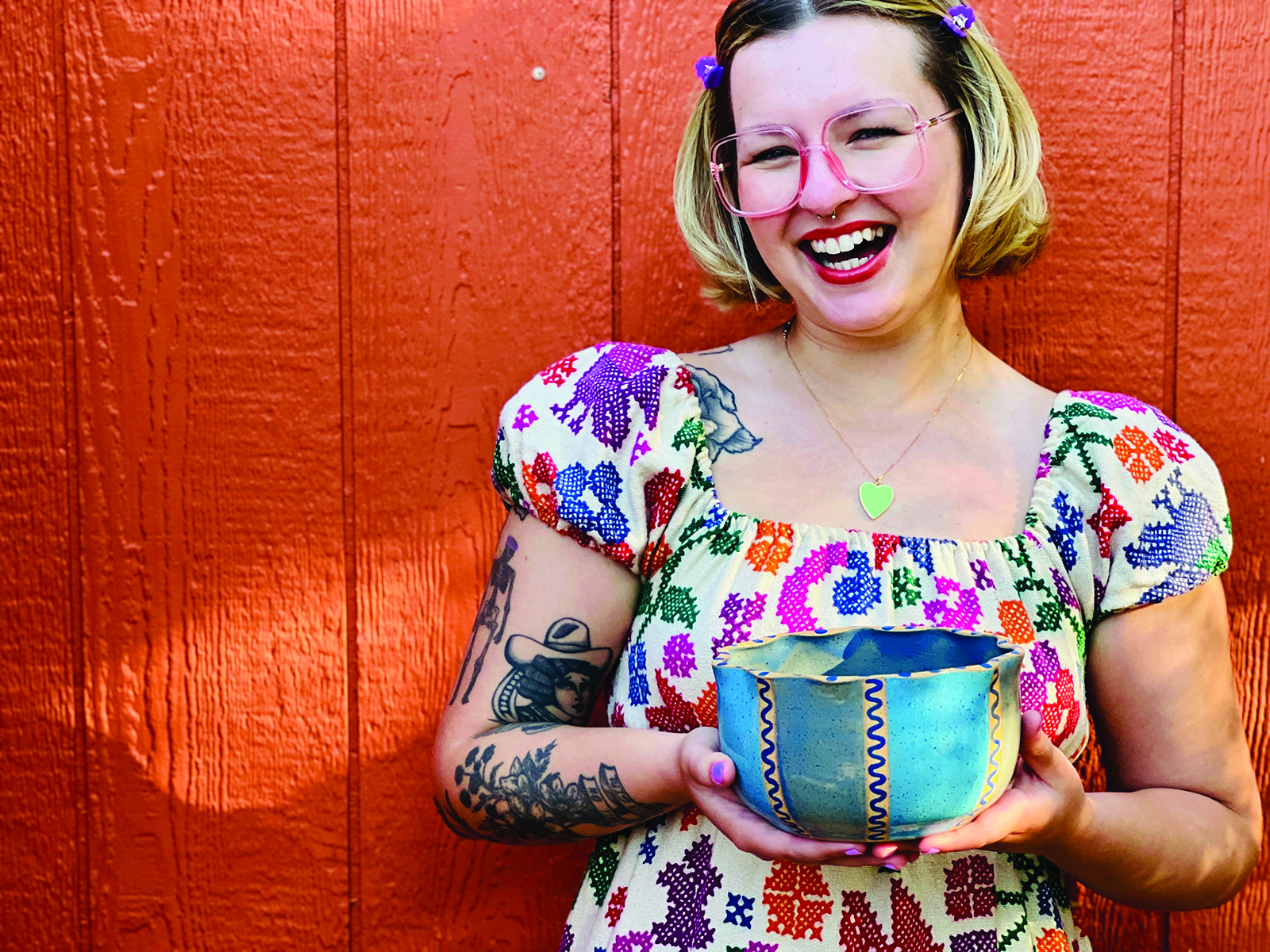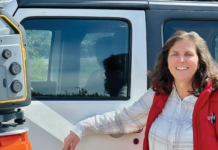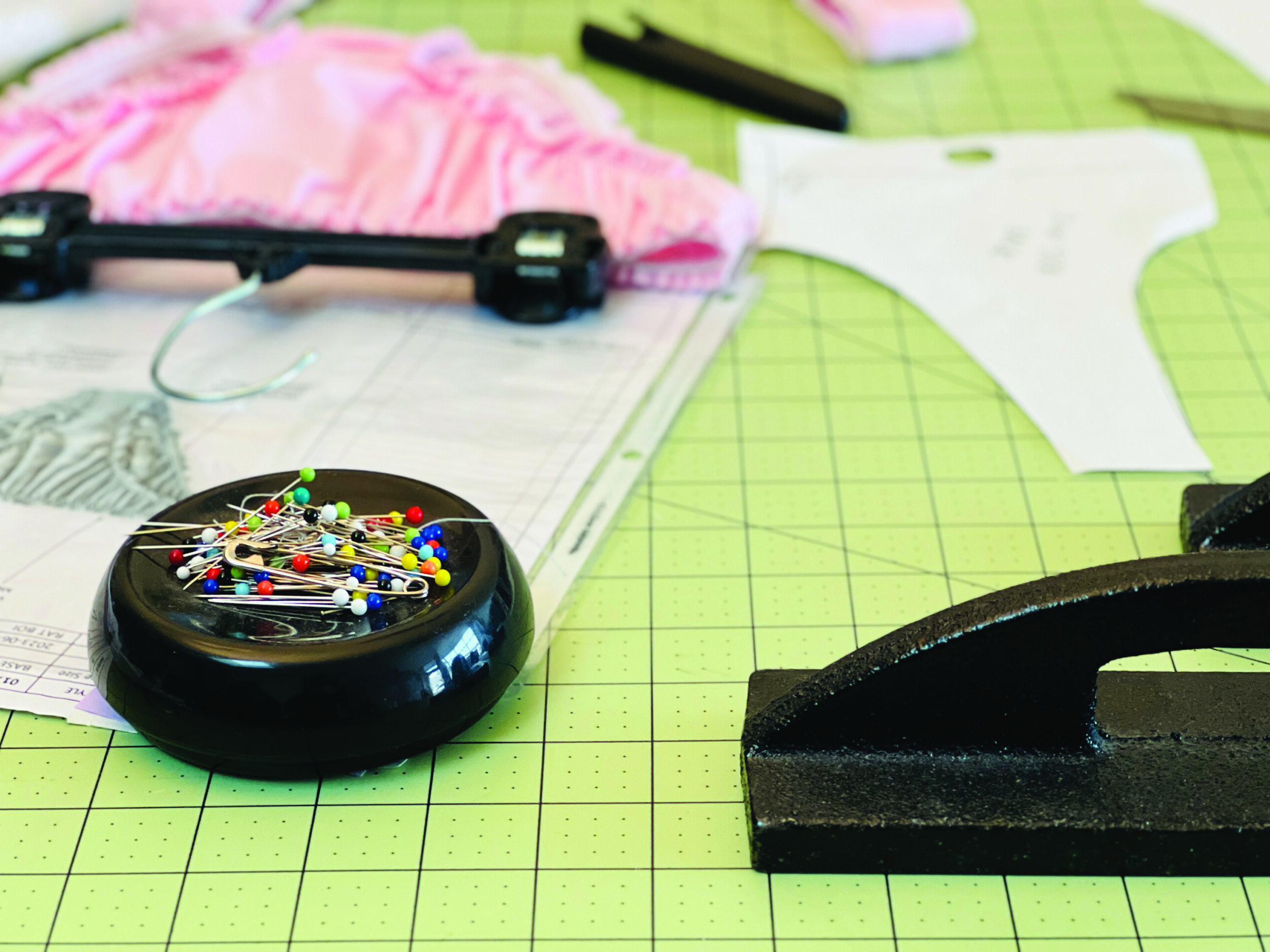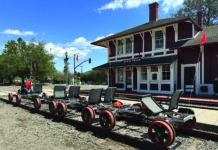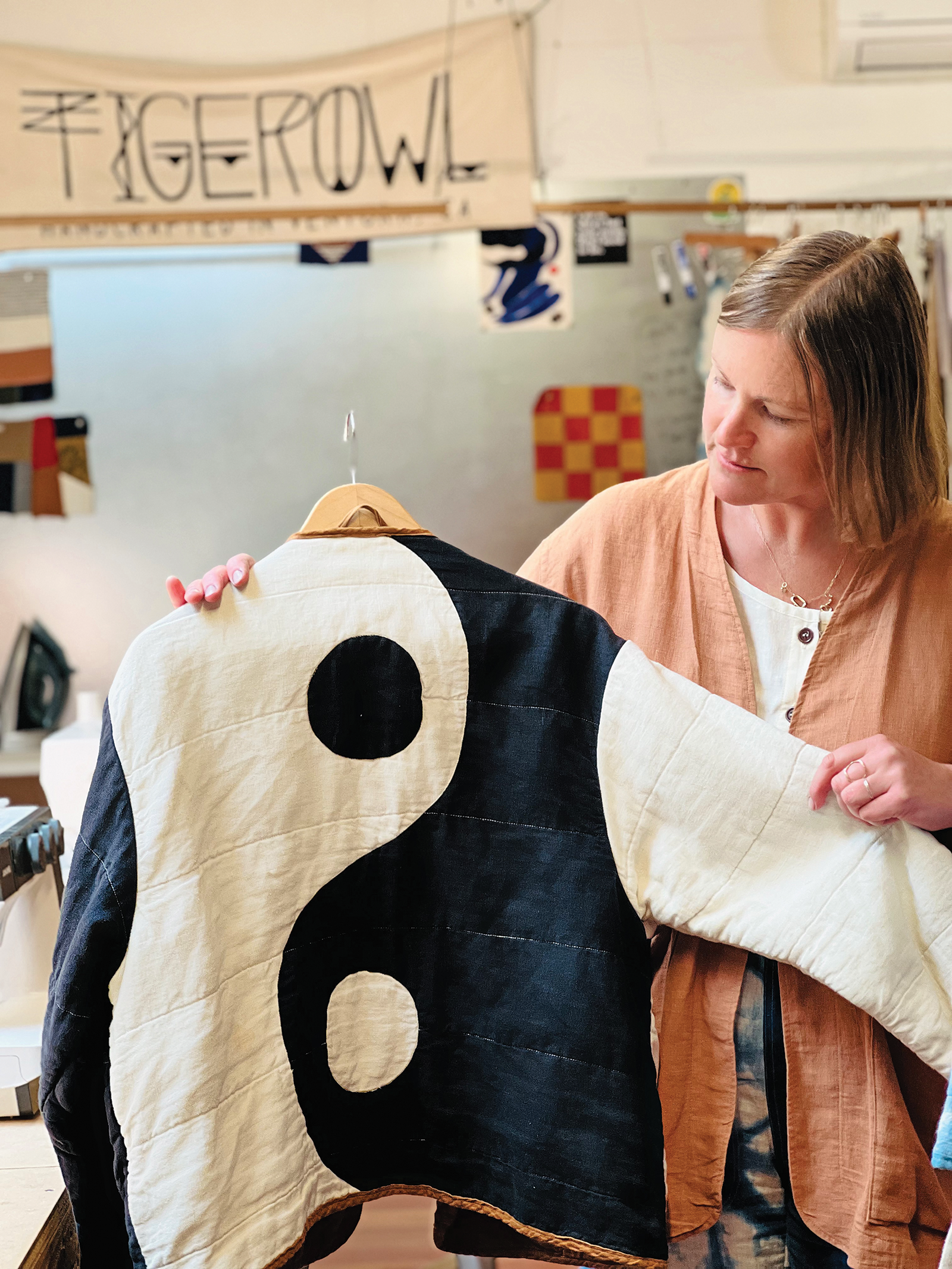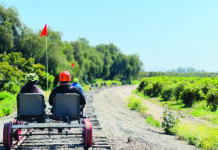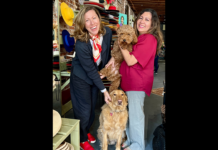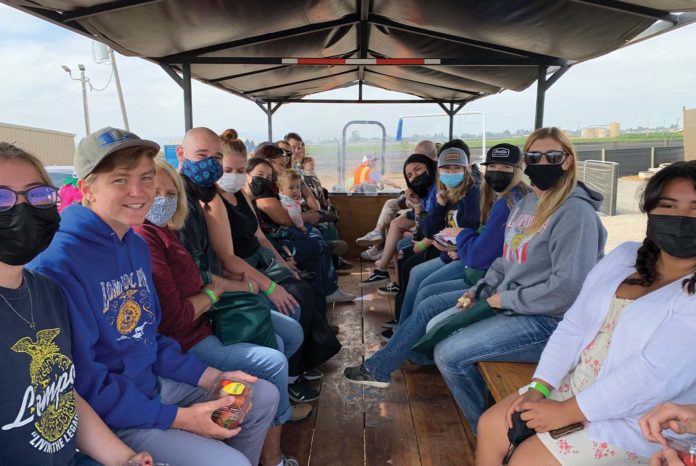By Marina Dunbar | Photo courtesy of SEEAG
November is the month in which the United States celebrates Thanksgiving, and thus it is imbued with an attitude of gratitude. It is a time when many recognize that we are beholden to those who give to us; those who provide our community and beyond with the most fundamental of needs.
One organization which hopes to remind us of that is Students for Eco-Education and Agriculture. A local nonprofit organization founded in 2008, SEEAG works to educate young students about the journey of their food, including the obstacles that can occur within the agricultural industry. Since its inception, SEEAG has inspired a deeper appreciation for agriculture in over 80,000 local students.
The founder of the organization, Mary Maranville, is someone who truly embodies the spirit of giving back. She strives to help residents understand how much their wellbeing relies on the labor of agricultural workers whilst also giving children a fun and heartening experience that helps them to feel connected with their community.
“I’m the daughter of a farmworker, my father was a dairy farmworker,” explains Maranville. “Farming isn’t for everyone, it’s a calling. A lot of people who were raised on farms don’t go on to do farming. But for me, one of the most important lessons we have in our curriculum is teaching the kids how to appreciate farmworkers.”
A Fresh Idea
And speaking of appreciating hard work, Maranville had to find a way to bring her idea to fruition. She had to find sponsors who were willing to resource her organization. Fortunately, she was able to meet with the owner and president of Gill’s Onions, Steve Gill, who now serves as the treasurer of SEEAG.
“When you’re starting out, you have to raise money for nonprofits like this one,” recalls Maranville. “It takes financial resources. I went to a few different growers, and one of the growers told me I should talk to Steve Gill. So, I made an appointment and Steve was very gracious. I gave him a little presentation and he gave me my first check and he’s been supportive ever since.”
To say Gill is an expert on the subject of agriculture would be an understatement. Located in Oxnard, Gill’s Onions is one of the largest family-owned onion growers in the nation.
“I’ve been in the farming business my whole life,” says Gill. “I grew up on a farm. Our family goes back to farming to the 1880s in Oxnard. Currently, we farm close to 20,000 acres of vegetables in California, along with several processing plants, divisions. There’s just a lot of things that we do in agriculture. I became interested in SEEAG when Mary came to talk to me because education in agriculture is so limited.”
This limited education is surprising, considering not only how essential it is, in general, but also how paramount it is to Ventura County in particular and California as a whole. It is no secret that California has the country’s most booming economy, and much of that economic success comes from the state’s agricultural industry. However, with the recent threats of global warming and a global pandemic, the sustainability of the industry’s modern mode of operation has been called into question.
Farming and the Environment
Currently, California is suffering a serious drought. After years of dwindling water levels, Gov. Gavin Newsom declared an emergency across the entire state on Oct. 19. Some farmers are even being offered money to stop farming in an attempt to reduce water usage. This drought has had an immense impact on the world of local agriculture and Maranville makes a point to ensure students understand both the gravity of the situation and potential solutions.
“One of the stations we have in our farm lab is focused on water. I really try to make our lesson plans as realistic as possible for these kids. Be positive, but don’t sugarcoat facts. There’s a well that we use to demonstrate water usage. We tell them where the water level is at normal capacity and right now, it’s not at normal capacity, it’s way below it. This is how we talk about the drought, and water quantity and water quality . . . We also talk about soil and entomology because bugs are another big threat.”
Addressing the threats to agriculture is only one of several goals that SEEAG aims to achieve with students, however. The organization offers different programs and classes that students can take. The first of these is the Farm Lab Academy, a two-part program that consists of an in-class presentation and a field trip to a local farm. While visiting the farm, students will explore various stations following the journey of their food.
This program allows students to develop a greater understanding of the complex process of producing food and the workers who make it happen.
“We’re out on a lemon ranch,” explains Maranville. “Lemons are still picked by hand. We really emphasize that even though we live in the 21st century with all of this advanced technology, most agriculture is still picked by hand.”
Other programs offered by SEEAG include the Ventura (and Santa Barbara) County Child Wellness Initiative, where young students are given a presentation on the basics of good nutrition and the colors of the food rainbow; and the STEAM Career Pathways in Agriculture, where middle and high school students are offered an online presentation on the innovative field of 21st century agricultural work.
And of course, there is Farm Day, a Nov. 6 “holiday” founded by SEEAG in 2013 where various local agricultural institutions will open their doors to allow the public to see and experience for themselves the industry that sustains them.
“Visitors get to go right to the source,” says Maranville. “They can talk to the farmworkers, talk to the growers and their team, and ask them the questions that really matter to them. And they can get the answers right at the location. Events such as these are important to celebrate the hands and lands that feed us.”
The Heroism of Farmworkers
Of all the accomplishments they have achieved for our community, the SEEAG team is perhaps most proud of bringing attention to the colossal efforts of local agricultural workers. When taking a look inside the system that is California’s agriculture industry, one must acknowledge that these workers are some of the most vulnerable and underappreciated members of our society, despite filling one of the most vital roles.
It is ironic that the group that provides fresh and healthy food options to the country’s population is also among the lowest paid, making it so that most farmworkers cannot even afford the produce that they grow. California’s farmworkers have some of the highest rates of obesity, hypertension and hypercholesterolemia, which are health issues that often disproportionately affect the working class. According to the University of California, Davis Western Center for Agricultural Health and Safety, only about half of the state’s farmworkers have health coverage despite being at a higher risk for various illnesses. A survey conducted by the California Institute for Rural Studies revealed that the majority of farmworkers would not seek treatment even if they think they require it, due to fear of the cost.
Gill’s Onions has been a trailblazer for creating an ethical environment where the needs of workers are addressed and realized.
“Everyone is over the minimum wage in our organization,” explains Gill. “Some operations are on piece rates. It’s hard work, and it’s consistently the Hispanic people who come to do all this work. For some reason, no one else seems to show up for this kind of work. These workers are so important to us, they’re important to everything we do.”
The aspiration for fairness and social responsibility is something that strikes close to home for Gill. “I grew up on a farm, not knowing how poor my family was. Back then, farming was more of a lifestyle. Today, it’s more of a business. It’s important to make sure that all of your workers’ needs are met and then some.”
When students are visiting a farm through the SEEAG
program, it is often the first time they are picking a crop with their own hands. It may be a small thing in the moment, but it leaves a lasting impression on children who are getting a slight taste of the labor that is required to produce delicious produce.
Maranville looks forward to a future generation of SEEAG alumni who appreciate and advocate for the welfare of agricultural workers. “The goal of SEEAG is to not only educate students about the farm origins of their food, but hopefully make them lifelong agricultural ambassadors . . . When we bring them out of the classroom and onto the farm, we’re hoping that they really get inspired and learn all of the facets of agriculture, including all the hard work that goes into it. We hope not only to give them agricultural literacy, but a deeper appreciation for the people who make sure that their food is always there.”
Students for Eco-Education and Agriculture, SEEAG
P.O. Box 1461, Ojai, 93024-1461
Fig Tree Farms
13721 West Telegraph Road, Santa Paula
805.901.0213





